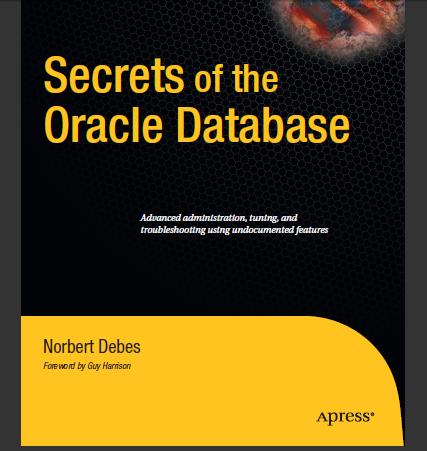Oracle数据库的小秘密,作者是Norbert Debes;
就内容而言并非最internal,换句话说对日常管理还是有用的,当然是对expert而言。
我的博客中翻译了他对AUDIT_SYSLOG_LEVEL解释的若干章节,今后会继续努力。
该书出版已经较长时间,但国内并无任何出版迹象;实际DBA专题类书的销量也不大,始终属于小众类的。
书的内容还是很有价值的,特别是对于几个参数的深入研究和使用perl 尝试相关实验的内容。
附上封面:
附上下载地址:Oracle Secrets.
我们以学习为目的…….

